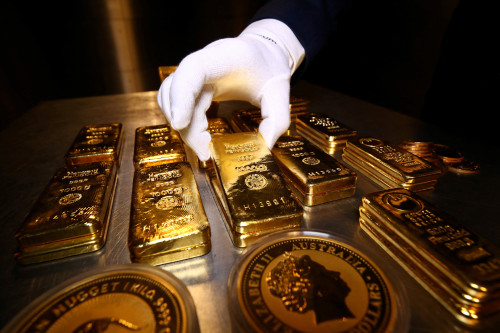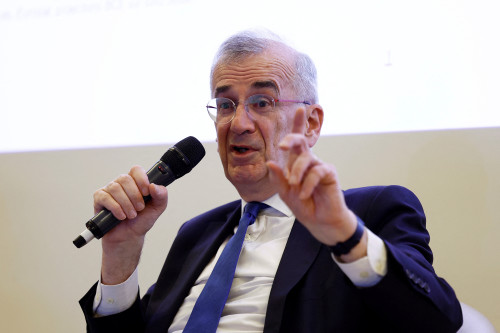By Brijesh Patel
(Reuters) – Gold prices have fallen almost 10% from a record high just above $3,500 per ounce in April as a de-escalation in U.S.-China trade tensions punctured momentum, but analysts are sticking with a bullish outlook due to strong underlying support for the metal.
Spot gold was trading around $3,180 an ounce on Friday, leaving prices on track for their worst week in six months. [GOL/]
The U.S. and China agreed to a truce over the harsh tit-for-tat tariffs they announced in April, prompting a surge in risk sentiment and denting the need for safe-haven assets such as gold.
The dollar index and U.S. benchmark 10-year Treasury yields also rose on the news, denting gold’s appeal. [USD/] [US/]
On the geopolitical front, U.S. President Donald Trump said the United States was nearing a nuclear deal with Iran.
“We’re seeing that the geopolitical environment is becoming less turbulent globally and less trade aggression from the U.S., which is moving investors away from the safe haven gold and increasing risk appetite in the market,” said Ricardo Evangelista, senior analyst at brokerage firm ActivTrades.
“However, nothing is set in stone and the risks still remain very high… Overall it’s too early to call out the top in gold prices.”
Gold, often used as a safe store of value in times of political and financial uncertainty, rose to an all-time high of $3,500.05 per ounce on April 22 and is up 21% so far this year after a 27% increase over the whole of 2024.
“Gold prices are more likely to rise than to fall from this stage onwards as other factors like central bank demand and very strong investor demand from China are not going away anytime soon,” said Nitesh Shah, commodities strategist at WisdomTree.
The inflow into physically backed gold exchange-traded funds in April was the largest since March 2022, with China-listed funds leading the move, data from the World Gold Council showed last week.
China’s central bank added gold to its reserves in April for the sixth straight month, official data from the People’s Bank of China (PBOC) showed earlier this month.
“I wouldn’t be surprised if data indicates that this correction in gold we’ve seen right now has been cushioned by fresh and continued central bank demand,” said Ole Hansen, head of commodity strategy at Saxo Bank.
“We need to see the economic data that will start to support the belief that the tariffs is having a negative impact on the economy. That will not only raise pressure on the Fed to cut rates, which should be positive. It may also lead to some fresh haven demand into gold,” said Hansen.
Data on Thursday showed a deceleration in the U.S. economy, the world’s largest, in April, including drops in producer prices, manufacturing output, and a slowdown in retail sales.
Markets are currently expecting the U.S. Federal Reserve to cut interest rates at least twice this year, beginning from September. Non-yielding gold tends to thrive in a low-rate environment.
“Longer term, we remain constructive (on gold) from a hedging perspective as geopolitical tensions are unlikely to disappear completely, real interest rates are expected to decline, the U.S. dollar is forecast to weaken, and central bank buying remains strong,” said UBS analyst Giovanni Staunovo.
(Reporting by Brijesh Patel in Bengaluru; Editing by Hugh Lawson)







